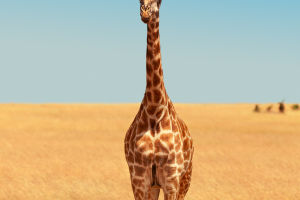Dolphin is the collective name for a group of aquatic mammals in the Delphinidae They are small or medium-sized toothed whales. They are widespread in all the world's oceans.
They are also found in brackish waters near inland seas and river mouths. Individual species are found in inland rivers. Usually prefer to live in groups. Preys on fish, squid, etc.
The family Delphinidae diverged from the Miocene around 10 million years ago. There are 17 genera and nearly 40 species. It is the largest family of cetaceans. Pilot whales, killer whales, and other black cetaceans also belong to this family. The modern relatives of the Delphinidae are the Phocoenidae and the Monodontidae, which together form the Delphinoidea.
The dolphin has a fusiform carapace. The skin is smooth and hairless. The body is athletic and agile. Good at jumping and diving. It is the fastest-moving mammal in the water. Has a well-developed sonar system. Relies heavily on echolocation function when active. Excellent hearing in water and air.
The nostrils are on the top of the head and are used for exiting the water for air. Size ranges from 1 meter long and 30 kg (pygmy dolphins) to 9.5 meters long and 14 tonnes (killer whales). Morphological features also vary. They have complex brain gaps and good memory. They can learn many movements with human training.
They are one of the most intelligent animal families. They have gentle, friendly, and lively personalities. They are universally loved by people all over the world.
Female dolphins take approximately five years to become sexually mature and ovulate. However, it takes a few more years before they are fully fertile. Once mature, the male dolphin spends his days in groups of females, searching for his intended mate. Once they have found each other, they engage in brief mating rituals before departing for other areas.
As mammals, dolphins share many characteristics with humans. Although they live in the sea, which is distinct from the land-based environment of humans, there are some slight differences in the way they are born. Young dolphins are born tail-first, whereas human babies are born head-first. Female dolphins typically carry their babies for eleven months before giving birth.
When a female dolphin gives birth, she first arches her body and vigorously swims forward, bending her tail considerably. This continues for nearly an hour before the tip of the fetus' tail lobe begins to show. In another two hours, the baby dolphin is born, weighing about 10 kg, which represents 5% of the mother's body weight and 45% of her length.
As soon as the calf's entire body emerges from the mother's body, the mother and other female dolphins help it to the surface to take its first breath, after which it follows the mother. While the mother is in the water giving birth, the other females gather together to protect themselves from sharks and killer whales. After the birth, while the mother goes in search of food, the other dolphins take care of the newborn calves, forming a circle so that the young dolphins can play safely within.
Newborn dolphins feed mainly on their mother's milk, so they must stay close to her from birth. It is not until they are around three years old that they learn to fish and other survival skills and gradually move away from their mother's group to live with their peers. Young dolphins suck milk from the teats on either side of the mother's reproductive orifice.
When nursing, the mother always tilts her belly to bring the teat closer to the mouth of her young. The milk is injected into the youngster's mouth by a tube formed by the youngster's tongue and the mother's teats, alternating between the two teats. After a year, the young dolphin's weight increases to 64 kg and its length is 0.6-0.7 m.


